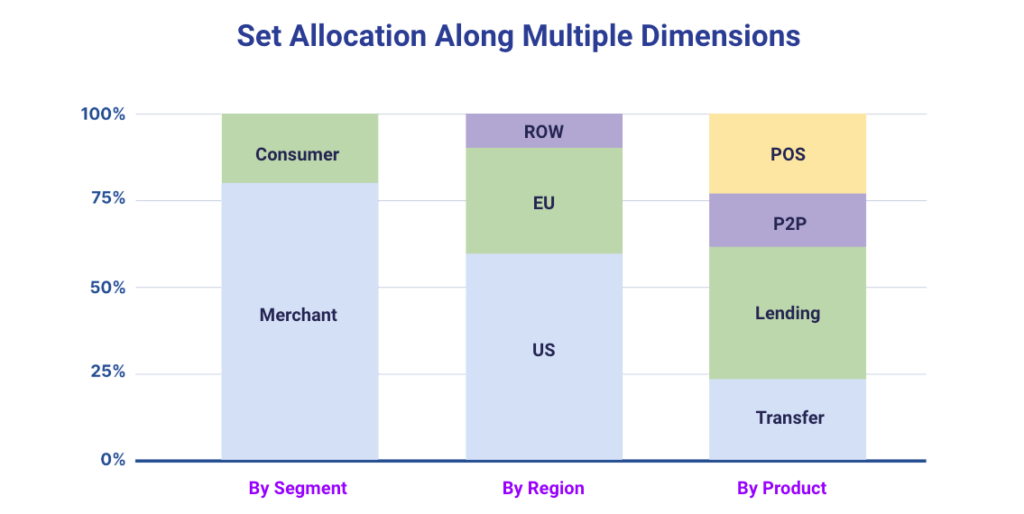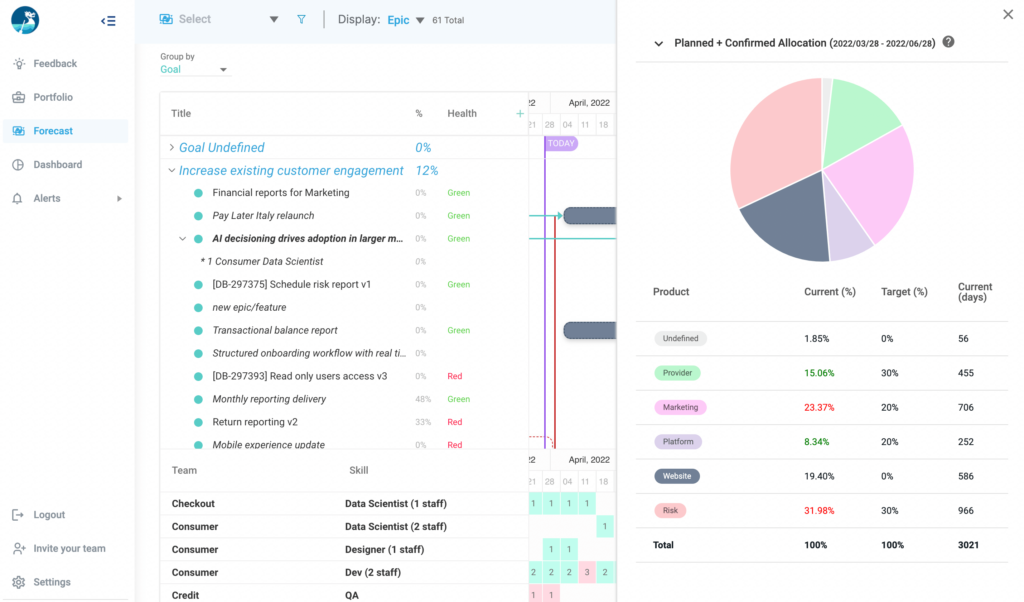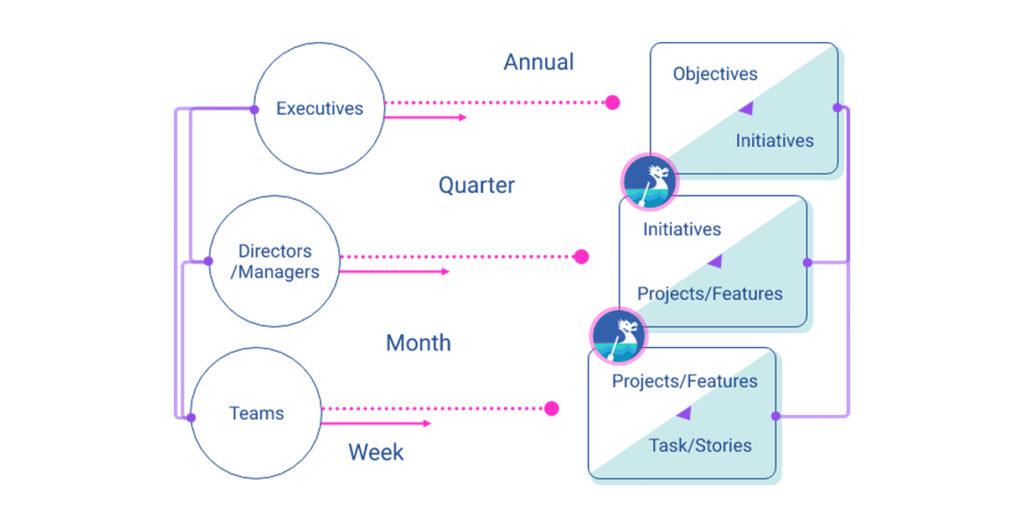Annual planning, sometimes called strategic planning, is both a financial forecasting/ headcount budgeting exercise and a strategic roadmap planning event. As executives and teams of all functions gather to make key decisions for the “whole year,” annual planning is always a hectic event. Especially as we enter uncertain times, how can product leaders lead annual planning effectively?
Fear no more. Through decades of strategic planning at companies like PayPal and, Bigcommerce, and working with thousands of product leaders at Dragonboat, we know there are ways to lead a strategic annual plan using systems and tools to effectively align everyone. So at the end of it, your whole company will have a roadmap to success. And you won’t need to redo your plan after one quarter.
In this post, we’ll cover the top challenges of a strategic annual plan and how to address them.
- Strategic Planning With So Many People is Really Hard
- Too Much Data and Confusing Docs/Sheets
- Budget and Resource Plan is Disconnected from Delivery
- Plans Change and Output is Abandoned Shortly
Let’s dive in.
Challenge #1: Strategic Planning With So Many People is Really Hard
A strategic plan requires big picture mission and vision, data, team input, and creative solutions. This is why strategic planning typically involves almost half of the company, from execs to directors, managers, and teams. It’s chaotic and confusing. Companies often struggle to manage the volume of conversations and meetings involving multiple stakeholders from various time zones, functions, teams, and levels.
To avoid chaos, a common solution we see companies apply is to remove teams from the process. This can simplify the planning, however, it often results in out-of-touch plans that lack creativity and are harder to execute.
Solution: Build a 4-step process for strategic planning
This way, you can orchestrate the right people, participate at the right time, and create the right sequence of activities and deliverables.
The 4 steps of strategic planning include:
- Top-down context – the executive team reviews vision and mission, evaluates, debates, and aligns on key strategic considerations or pillars
- Bottoms up input – now armed with the strategic context, teams can brainstorm and suggest initiatives, as well as resourcing needs
- Scenario and resource forecasting – top-down context and bottoms up input are integrated, matching financial needs with current resources and historic forecasts (say/ do) to evaluate scenarios and decide on the path forward
- A get-started plan – available for continuous context and adjustment
Each of these steps can take 1-2 months with some overlap. Orchestrating them is no small feat which is why companies often “complete” the annual plan well into Q1 of the year. So plan ahead. We typically recommend starting at the beginning of Q4 for mid-size companies and a few months earlier for larger companies.
Tip: Dragonboat customers account for an annual plan as part of their product ops roadmap. So they can effectively plan and orchestrate the annual planning while providing everyone visibility on this company-wide exercise.
Key benefit delivered in this uncertain time: the ability to engage more creative minds in a well-orchestrated way reduces misinformation and confusion stemming from uncontrolled chaos.
Challenge #2: Too Much Data and Confusing Docs/Sheets
The 4 steps of a good annual plan come with many inputs from many sources. Collecting, organizing, and analyzing data is a big challenge.
For example, typically there is a strategic template for Step 1, that includes Vision, Mission, Strategic Considerations, Pillars, and Bets. Cory Gaines, Chief Product Officer (CPO) of Blackhawk Networks shared a popular version of “plan on a page” in a recent CPO Series webinar. While having these templates is a good way to review individually, it’s very difficult to consolidate, categorize, and create hierarchies or groupings.
Of course for each of these other steps, there are many more docs and sheets — sheets for roadmaps, sheets for strategies, sheets for capacities, sheets for allocation, you name it.
Solution: Adopt a system for integrated data for all participants
Lead annual planning with an end-to-end system that both supports the documentation needs as well as carries the workflow throughout the strategic planning process. This is essential to keeping the complex endeavor well orchestrated.

Tip: Dragonboat customers use Dragonboat to carry out strategic planning. This spans from defining goals and evaluating strategic initiatives to collaborating on assessment and resourcing needs, all in one place. With custom views for different roles and steps, participants can focus while still having the option to drill down to the integrated view.
Key benefit delivered in this uncertain time: the speed and quality of access to relevant information exponentially improve the speed and quality of decision-making, especially when more participants are involved.
Challenge #3: Budget and Resource Plan is Disconnected from Delivery
During annual planning, ROI is often used across functions, while benefits and costs are used for forecasting and budgeting. This poses a challenge for the product and engineering team. This is because long lead times, dependencies, and resources are not always fungible. A backend engineer is not best suited for data analysis. So it may be the case that “on paper” the budget works, but in reality, it’s a low feasibility plan because there is a surplus in one skill and a deficit in another.
Another challenging part, which most tech companies have learned, is the so-called “Mythical Man Month” where you simply can’t divide a 12-month project by 12 people into a 1-month project.
Solution: Perform resource forecasting that accounts for fungible resources and forecasted benefits
To solve this problem, there has to be a process to translate business goals into product goals to initiative roadmaps. And then apply high-level resourcing and benefit forecasts to evaluate delivery feasibility. Then, you’ll implement this complicated calculation and data scenarios in a suite of spreadsheets and pray for no mistakes that will break the whole thing.
Alternatively, you can adopt Dragonboat. Dragonboat is the most robust strategic portfolio management tool that connects and triangulates business benefits with product and resources for real-time dynamic planning scenarios.
“Before using Dragonboat, we had different teams planning in spreadsheets and misalignment of allocation of resources to core business objectives that leadership was trying to achieve.
Dragonboat is something we’ve been able to leverage to push our strategic planning capability, both annually and continuously, throughout the organization. We’ve changed our strategic mindset to really focus on where growth lies and focus the product organization on the proposed growth objectives and we’re starting to see the results of that.”
Perry Steinberg, Chief Product Officer at Symphony Talent
As Hitesh Anand, Chief Product Officer of Verifi (acquired by Visa) said “What used to take an army of people, months of time, and hundreds of meetings, can be done in Dragonboat in a few minutes. So you have more time for passionate, data-backed discussions that help you reach the best overall outcome.”

Key benefit delivered in this uncertain time: increases resourcing “yield” with effective scenario planning.
Challenge #4: Plans Change and Output is Abandoned Shortly
One of the most frustrating challenges is when output gets shelved shortly after annual planning concludes. Especially after all the painful exercises that went into strategic annual planning.
Why does strategic planning often fail to carry through? There are 2 main culprits:
- You can’t plan for the whole year – because things can change – the market, customers, competition, product, resources, etc.
- Context is lost – because the data, analysis, and outputs are distributed in spreadsheets or slide decks and not easily referenceable by teams. Without information continuity, strategic context gets lost in day-to-day execution.
Meanwhile, the budget and committed business goals still remain the same. How do you reconcile the long-term direction and outcome with the day-to-day execution?
The solution is to implement a strong operating system consisting of structure, cadences, and tools.
- The structure includes effective integration of operations, e.g. product operations.
- The cadence includes connecting annual planning with quarterly planning and trickling down to sprints or weekly plans.
- The tool stack includes a strategic portfolio tool like Dragonboat and an execution-oriented tool like Jira, Asana, and Azure DevOps.

Key benefit delivered in this uncertain time: enable the strategic context and resources for teams to execute and deliver, while allowing for pivots and changes via the responsive operating systems as new critical information emerges. Check out how to build and deliver a strategic plan in the context of agile product organizations.
Learn more about how Dragonboat can help you successfully lead strategic annual planning that your teams can execute with confidence.



